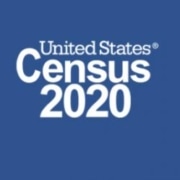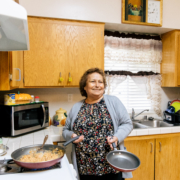Good rural data—including reliable sources of housing data—is essential
Right now, prosperity may feel very distant to rural communities. Yet as we look towards recovery from COVID-19, we will need better information on rural businesses, industries, and workers, as well as the resources they need like education, childcare, and affordable homes.
A new report, “In Search of Good Data: Measuring Rural Prosperity,” shines a light on the data needed to address these issues. This research, conducted by the Urban Institute in collaboration with the Housing Assistance Council (HAC) and the Aspen Institute Community Strategies Group, includes a scan of 22 data sets and a series of interviews with researchers and practitioners who use data in rural areas.
How “good” data is lacking
Rural America is not the monolith that many think it to be. The geography that covers 97% of United States land is as diverse in its economic industries and social infrastructure as it is in landscapes. Yet in many cases “rural” is defined by what is left over when suburban and metropolitan geographies are outlined. More remote communities that face additional challenges will continue to feature in rural data sets, while the prosperity in some growing rural communities will be aggregated into nearby metropolitan areas.
Measures of entrepreneurship, volunteerism, local government capacity, retirement communities, agricultural employment, and social capital are all important in rural areas, but these can be tricky to measure and are non-standard measures of prosperity, so often overlooked.
“For rural prosperity… community outcomes are a little bit different. These are things like school-readiness scores community-wide or housing affordability, such as how many households are paying more than 30 percent of their income in housing costs, and the rate of health insurance coverage.”
-Rural practitioner
The small numbers inherent to rural areas also challenge data collection. The Census Bureau’s American Community Survey (ACS) is based on a sample of the total population; although new data is released every year, this sampling is an aggregate of five years; this affects the accuracy of data and can create a high margin of error in remote areas with low population. Despite these flaws, the ACS is still the go-to-source, used by practitioners and researchers alike and often used in combination with other data sources to understand rural realities.
Housing data for low-income rural populations
ACS data is used to distribute rural housing guaranteed loans, direct loans, and loans for businesses and facilities—about $30 billion of which is set aside for rural areas. Yet given the significant challenges in the ACS of accurately describing rural realities, many community development practitioners expressed their concern. Better rural data is crucial for these public programs, including affordable housing loans from U.S. Department of Agriculture.
The Housing Assistance Council has long been working to address the shortcomings of rural data for rural housing developers nationwide. HAC’s rural and small-town tract definition has incorporates housing density, commuting codes, and a rural character measure. The Rural Data Portal, as well as the Veterans Data Portal, employ this definition in a user-friendly format for improved data access.
HAC has also consistently advanced housing policy research for persistent poverty counties—areas where poverty rates have remained high for three decades or more, and where data collection tends to be most sparse. Native American lands pose a challenge to data collection not only because of their relative remoteness, but because their boundaries do not match the boundaries of counties, census tracts, or even states – the geographies that are used in common data sets. Native communities, as well as the colonias in the southwest and the Mississippi Delta are also among the rural communities whose historical distrust of data-collecting institutions makes accurate reports difficult.
We need to get better
The efforts of one organization alone, however, cannot address the significant issues with rural data collection, dissemination, and use. Here are some next steps based on the research findings:
- Increase sample size and encourage community engagement around survey response
- Create partnerships between owners of data sets, governments, and researchers
- Collect independent data when data sets are inadequate
- Think carefully about rural definitions to assure they reflect rural realities
Data is essential to understanding demographics, housing costs, poverty, housing finance, and financial well-being. This report familiarizes us with the limitations of commonly used data sets and identifying shortcomings that could be addressed through new methods. More work is needed, but if we are to promote rural prosperity in a new age, rural realities must be a part of the picture.




